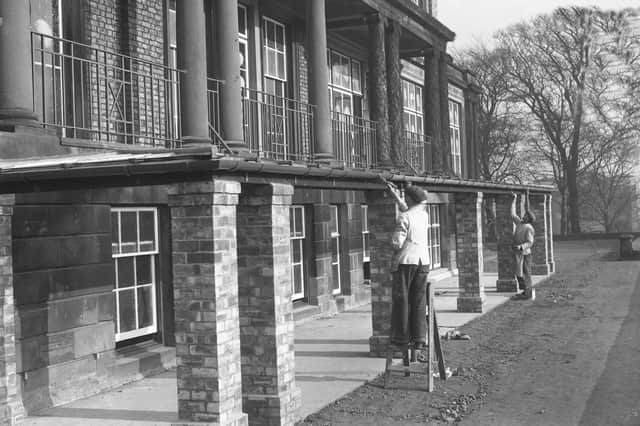Taking a look at some of Sunderland's finest houses in its long history


Trevor Thorne has unveiled his new book ‘The Grand Houses of Sunderland’ and said: “There are a surprising number of noteworthy houses around Sunderland."
The book includes buildings which are still standing and others which have disappeared
Advertisement
Hide AdAdvertisement
Hide AdTrevor added: “It tells the story of a developing, busy town and the lives of those who created its wealth. This meant they could afford the grand houses and the cost involved in running them.
Shipbuilders, shipowners, and mine owners take much of the focus, said Trevor.
An extract from the book covers Ashburne House in Ryhope Road where the Backhouse family lived.
The land on which the house was built was bought at auction in 1830 by Edward Backhouse.
Advertisement
Hide AdAdvertisement
Hide AdHe built Ashburne around 1833 and Trevor tells us: “The name of the house possibly comes from the stream which ran through sizeable parkland.
“The house is constructed of Flemish bond brick with ashlar basement and dressings. The main part of the house is two storeyed and has a raised loggia with large windows overlooking the park”
The Backhouse family were Quakers and successful bankers. Edward Backhouse, who lived from 1781-1860 opened the Sunderland branch of their bank and this added to his own substantial wealth.
In 1896, the Backhouse banks became part of what we know today as Barclays Bank.
Advertisement
Hide AdAdvertisement
Hide AdTrevor added: “Some family members were highly intelligent and interested in various branches of science. Edward was an artist, pioneer photographer and historian. He wrote history books on the early Christian church. He also built-up several collections including zoological and botanical specimens which he donated to Sunderland Museum in 1907.
“Edward Backhouse junior was in occupation of the house after the death of his father in 1860. He married Katherine Mounsey from another prominent Quaker family.
"The two families lived in various houses in the area for many years (particularly West Hendon House and The Limes). Katherine was still at Ashburne in 1891.
"The house was used as a Voluntary Aid Detachment hospital during the First World War and it was large enough to have 58 hospital beds.”
Advertisement
Hide AdAdvertisement
Hide AdTrevor added: “On Edward junior’s death, his own son Thomas did not move into Ashburne. When it had been built it was without bathrooms or modern conveniences and, as a result of this he found Ashburne was not particularly inviting to live in.
“After the death of T.W. Backhouse at West Hendon House the land around the house was gifted to Sunderland Corporation. It was used for the construction of a park which was completed in 1923. The house itself became the School of Art in 1931 and was later part of Sunderland University before they also moved to more modern accommodation in 2012.
The book is available at Waterstones, Sunderland Antiquarian Society, Clays Nursery and Haswell’s Farm Shop priced £9.99.